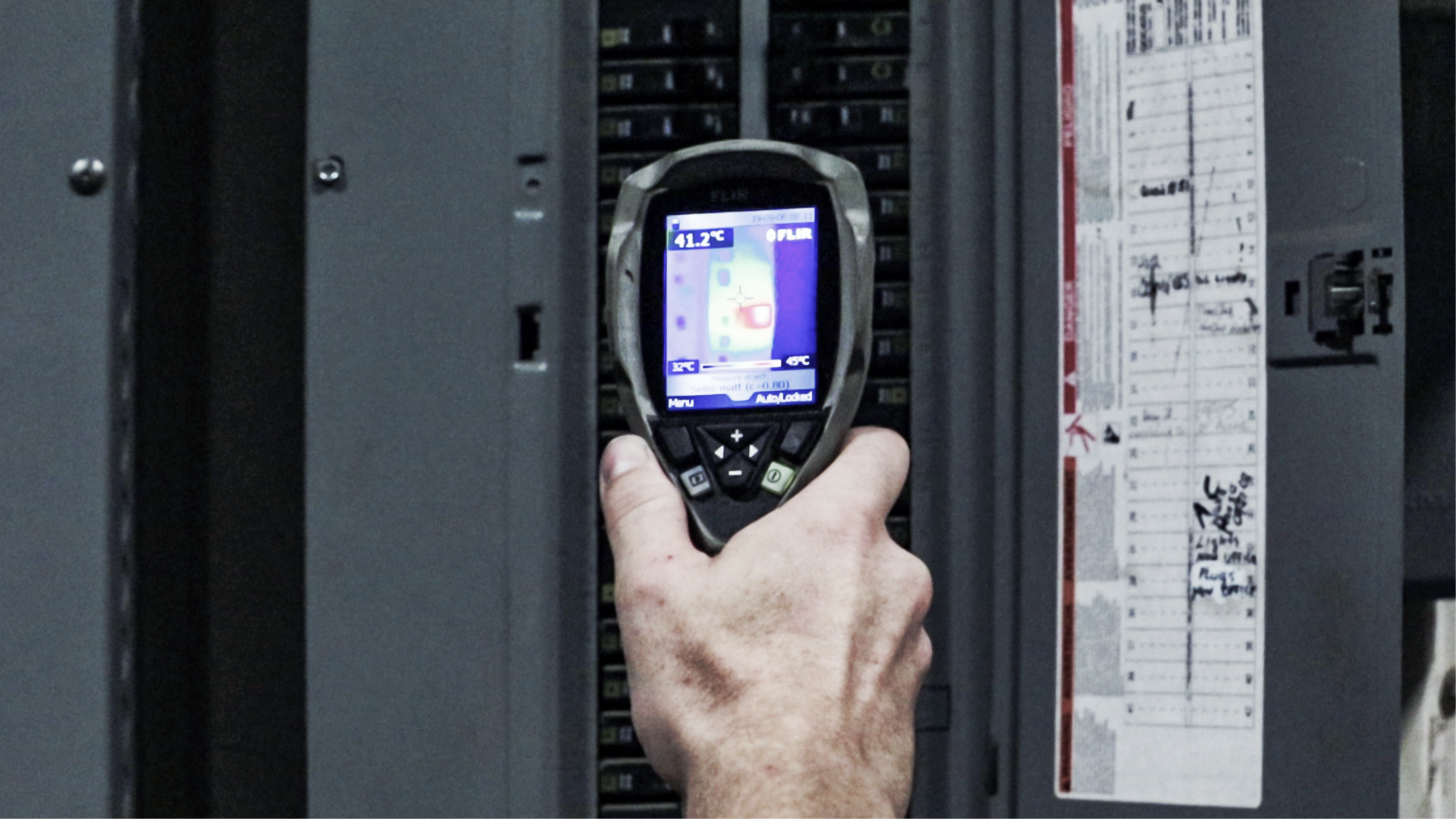Infrared & Electrical Code Predictive Maintenance Survey

Predictive Maintenance vs. Reactive Repair
Excessive or an abnormally high level of heat is often an early symptom of equipment damage or malfunction. As a result, this makes heat a key performance parameter monitored in predictive maintenance (PdM) programs. By monitoring equipment performance via infrared thermography surveys and scheduling maintenance when needed, facilities can:
- Reduce the likelihood of unplanned downtime due to equipment failure,
- Spend less on "reactive" maintenance service and equipment repair costs,
- Extend the lifespan of electrical systems and equipment assets, and
- Further maximize maintenance and production efficiency.
The goal is essentially to transition your maintenance resources away from emergency repairs and into the less-chaotic world of scheduled inspections of key equipment. In other words, repair small issues before they arise in the first place. A simple, small repair that could have quickly been resolved can easily turn into expensive damages and lost productivity if left unaddressed. By using predictive maintenance to your advantage, these problems can more easily be discovered and repaired before they wreak havoc on equipment and system components.
Cost Savings
Studies by the Federal Energy Management Program (FEMP) estimate that a properly functioning predictive maintenance program can provide savings of 30-40% over reactive maintenance and repairs.
To calculate savings at your facility, start by estimating the costs of unplanned emergency equipment failures. Factor in your human resources, cost for emergency labor, parts, and lost revenue from specific production lines that are affected by that downtime.
The Direct Advantage
- As licensed technicians, we're able to survey without the headache of hiring another contractor to remove covers when working in or around your exposed electrical system components.
- We're able to create actual repair quotes and budgets upon completion, with intimate knowledge of exactly what needs to be done in order to resolve any issues discovered.
- We're able to repair urgent or critical issues on-the-spot and in real time.
- Not only do we survey for heat related issues, but we also survey for any violations against the National Electrical Code (NEC). We can locate and identify improper wiring methods and other unsafe potential points of failure that wouldn't show up on an infrared camera.
Survey Targets
Infrared Inspection
- Electrical panels
- Electrical disconnects
- Electrical controls, controllers, and motor controllers
- Electrical contactors, switches, and devices
- Motors and their connections
- Electrical switchgear, distribution panels, and bussing
- Transformers and their connections
- High-voltage power lines and apparatus
- Environmental heating and cooling equipment
- Process heating and cooling equipment
- Moving parts, seals, and bearings
Electrical Code Survey
- Inspection for improper or damaged wiring methods deployed by tenants or other contractors within the facility
- Proper sizing for conductors in relation to the overcurrent protection devices (AKA breaker and fuse sizing)
- Note other observable code violations involved with the Infrared Inspection targets
What You'll Get
- Full infrared and electrical code inspection survey list as documentation on ALL items surveyed.
- Industry standard FLIR infrared report, detailing any and all hot-spots observed and determined to be of concern.
- Immediate real-time notification and repair via on-the-fly approval(s) of any hot-spots discovered determined to need immediate action
- Ex. Burnt or burning conductors, panels, or terminations posing an imminent fire hazard
- Automatic follow-up quoting for any and all recommendations
